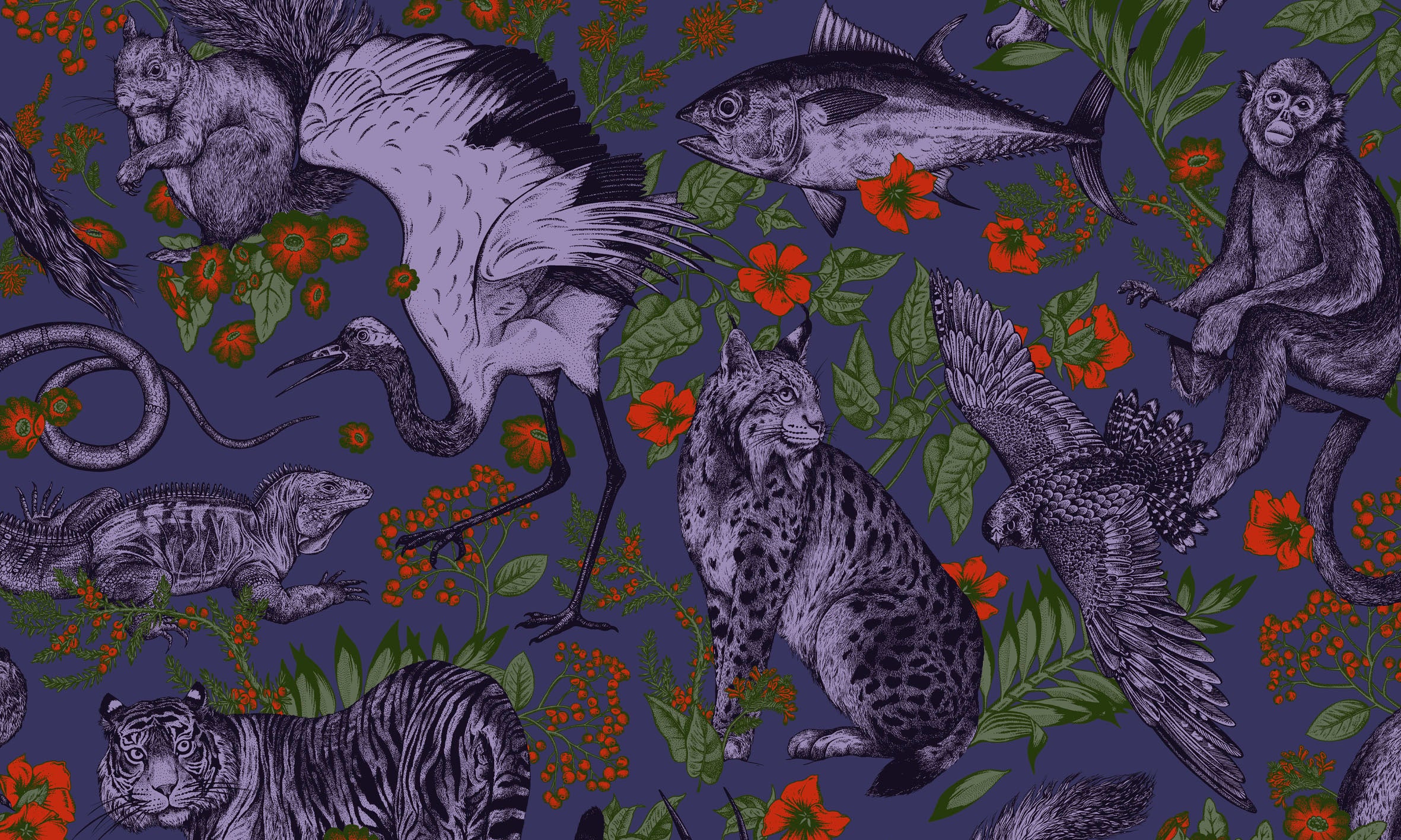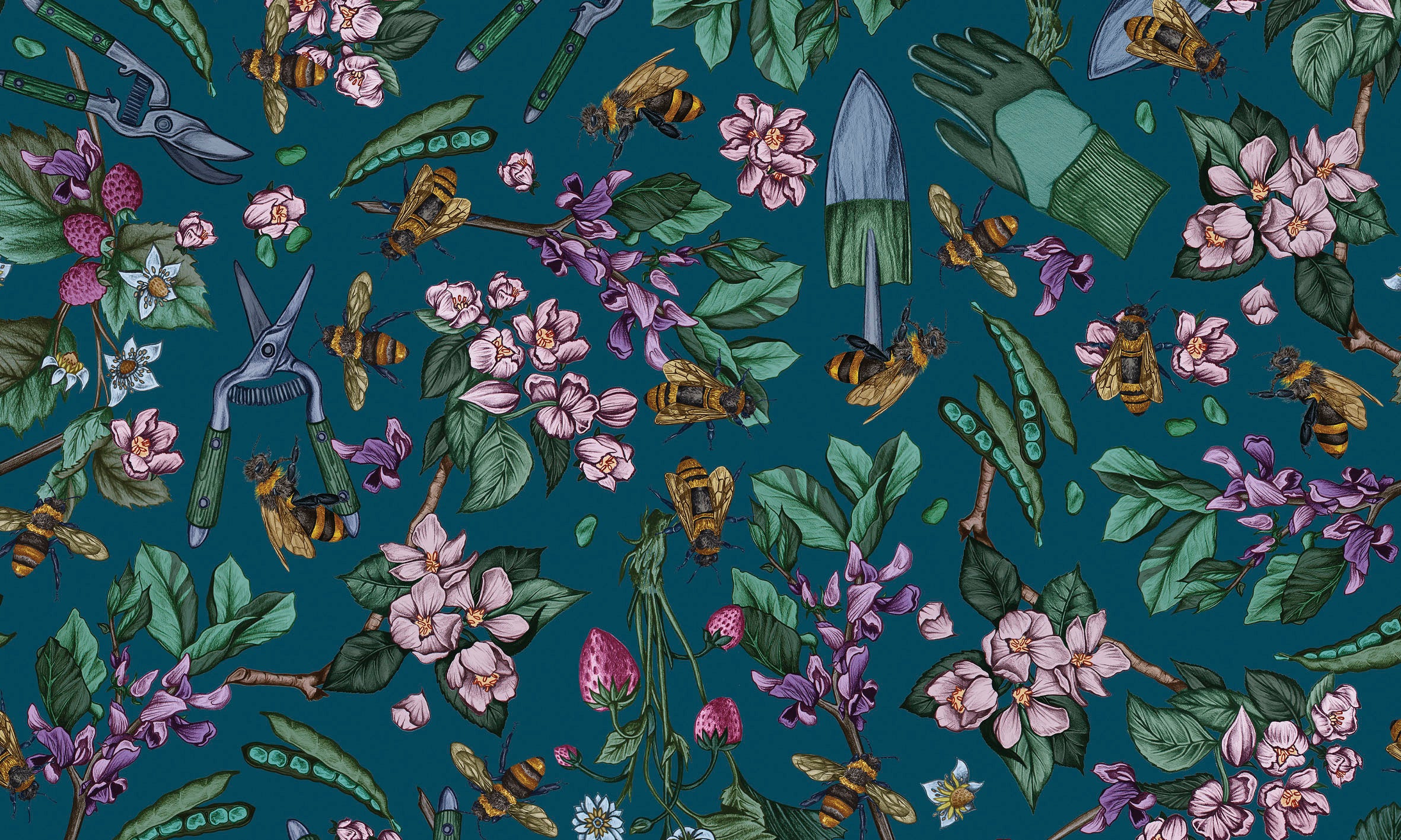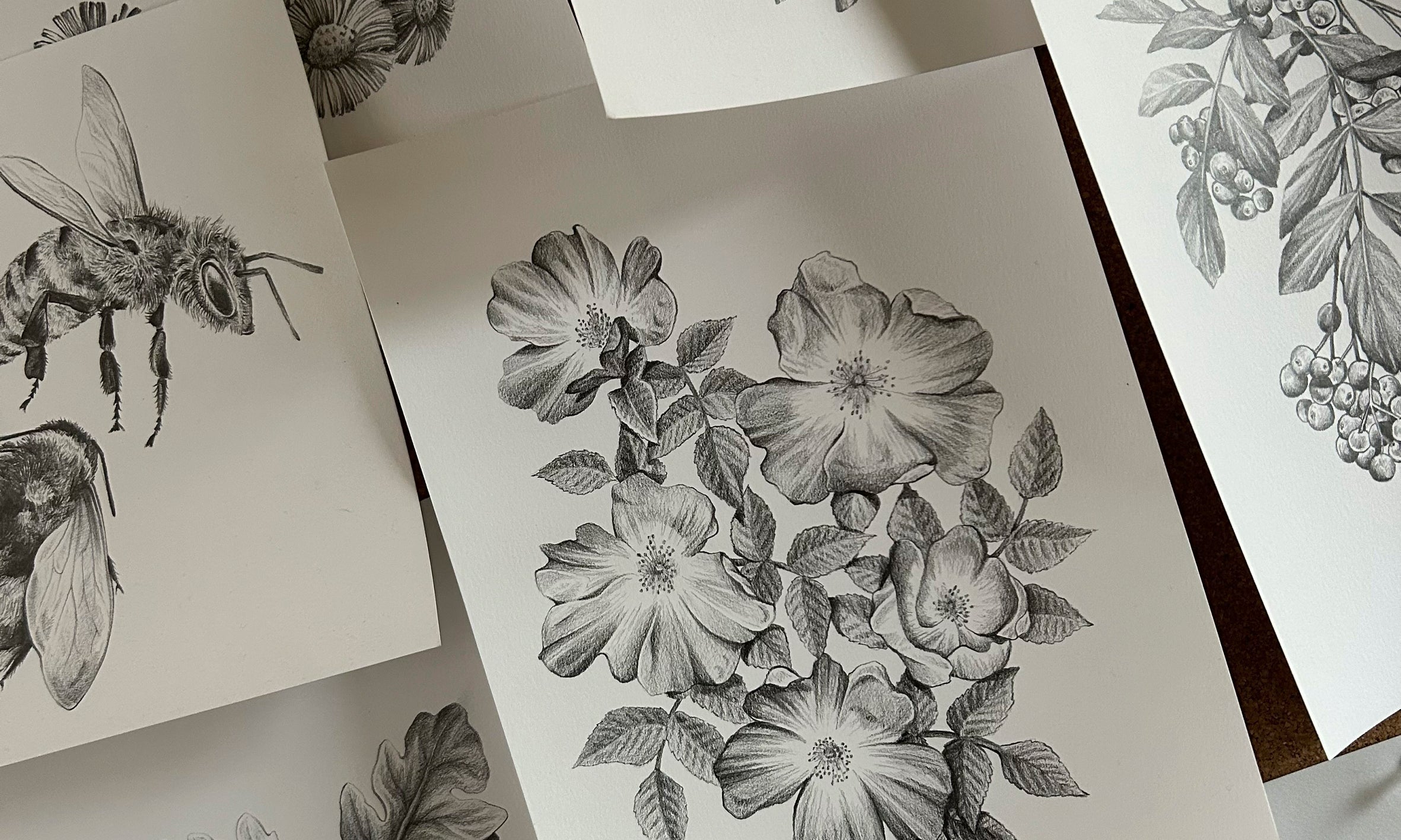Success Stories

This print shines a light on the success of conservation efforts around the world. The design heroes animals and plants that are bouncing back thanks to successful conservation projects.
Whooping cranes nearly vanished in the mid-20th century, with a 1941 count finding only 16 living birds. Since then, these majestic birds have taken a step back from the brink of extinction. Captive breeding programs have boosted their numbers, and successful reintroduction efforts have raised the number of wild birds to an estimated 660 in 2021 - this is testament to the progress that is made possible by the Endangered Species Act.
Whooping cranes are generally safe from hunting and egg collection but their biggest threat - loss of wetlands - persists. Though the areas that the birds frequent are protected, they are isolated and make the entire population vulnerable to any disastrous ecological event or change. To keep these majestic birds safe it is important to continue protecting their home environment in which they (and many other endangered species) thrive.
Peregrine falcons are large birds of prey, known for their speed. They dive-bomb their target at more than 320 km an hour, making them the fastest animal in the world. In 1970, a mere 10 to 20 percent of the historical falcon population remained and the species became classified as endangered.
For much of the 20th century, peregrine falcons were at risk of being extirpated (locally extinct) in the United States and Canada. Pesticides, particularly a synthetic pesticide called DDT (dichloro-diphenyl-trichloroethane), contaminated their diet of other birds and fish. Hunting, loss of habitat, egg collection, trading and other human disturbances also contributed.
The population started increasing after DDT was banned in the US in 1972. Conservation work such as captive breeding programmes and large-scale protection of nesting places is also helping to save the species from extinction. Peregrine falcons are now classified as stable with a global population of 340,000.
Continuing to eat organic and support farming systems which work in tandem with nature has a huge benefit to the ecosystems surrounding it.
Back in 2010, with wild tiger numbers at an all-time low of about 3,200 individuals, the world’s 13 tiger range countries made a global goal to double wild tiger numbers by 2022. Today, the new population estimate from the Global Tiger Forum is about 5,574 wild tigers. Notable advancements in how we invest in and monitor tigers can be seen in this new number which demonstrates about a 74% increase since 2010. Dr Jon Paul Rodríguez, chairperson of the IUCN Species Survival Commission, said: “Tiger population recovery shows us that solving complex conservation challenges is possible and within our reach. Although tigers are still endangered, their populations appear to be stable or increasing.”
Tiger threats still include poaching, poaching and hunting of their prey, habitat fragmentation and destruction due to the growing pressures of agriculture, climate change and human settlement, there is much to be said for the communication and collaboration in place. Expanding and connecting protected areas (over borders) and ensuring they are effectively managed whilst also working with local communities living in and around tiger habitats, are critical to protecting this magnificent animal. Working together collaboratively will always see better results.
Sea otters are a keystone species which means they play an important role in keeping the balance of coastal ecosystems around the northern and eastern North Pacific Ocean.
These loveable mammals feed on invertebrates including clams and sea urchins, which would otherwise run rampant and devour entire kelp forests. Kelp forests are important for several reasons, not least because they provide food and shelter for many other marine animals and birds, but they store carbon dioxide and protect coastal areas from storms.
Sea otters do not have any blubber to keep them warm - instead they have extremely thick fur. The fur is estimated to have a million hairs per square inch, making it the densest in the animal kingdom. This has meant that sea otters were hunted extensively in the eighteenth and nineteenth centuries. Their numbers dropped to as low as 2,000 individuals. An international ban on hunting along with conservation efforts and reintroduction programmes encouraged the population to grow.
There are over 125,000 sea otters alive in the Pacific Ocean today and we need to keep them rising. Although their presence is controversial amongst shellfish divers who see their appetite as a threat to their livelihoods, a 2012 study found that the presence of sea otters can indirectly lead to 36 times more carbon sequestration per square metre in kelp each year. The money from selling this carbon capture via carbon markets could fund an impressive amount of marine mammal conservation.
Iberian Lynx
Following six decades of decline, the population of the Iberian Lynx (Lynx pardinus) increased from 52 mature individuals in 2002 to 156 in 2012. The species has now moved from the Critically Endangered to Endangered category on the IUCN Red List.
This was achieved thanks to intensive conservation action including the restoration of rabbit populations (the main prey species of the Iberian Lynx), monitoring for illegal trapping, conservation breeding, reintroduction programmes and compensation schemes for landowners, which made their properties compatible with the habitat requirements of the Iberian Lynx. The species can be found in two regions of southwestern Spain as well as southeastern Portugal, which hosts its small reintroduced population.
Bluefin Tuna
Numbers of Atlantic bluefin tuna (Thunnus thynnus) are increasing year on year, and in 2021 the species was removed from the list of Endangered species on the IUCN Red List and reclassified to a species of Least Concern. As does the yellowfin tuna (Thunnus albacares) and albacore tuna (Thunnus alalunga), which were both considered near-threatened the last time they were assessed. The Atlantic bluefin tuna It was also removed from our Good Fish Guide red rated Fish to Avoid list and rated amber for the first time.
Here’s how to pick more environmentally friendly canned tuna.
Arabian Oryx
In the early 1970’s, the antelope species known as the ‘Arabian Unicorn’ was thought extinct – lost forever thanks to poachers. But in a bid to change their fate, a team called Operation Oryx was set up to try and bring this species back from the brink. Capturing the last remaining few animals and breeding them in captivity, the Oryx was slowly released back into the wild in 1982.
Today the species is categorised as ‘vulnerable’ on the endangered species list, with over 1,220 roaming wild across the Arabian Peninsula, plus another 6,000 – 7,000 in semi captivity.
The blue iguana recovery programme was started in 1990 in the Cayman Islands. Starting with less than a dozen captive individuals, there are now approximately 1,000 residing in nature reserves on Grand Cayman. Since the start of the project, the endemic lizard has become a national symbol and the species was reclassified from critically endangered to endangered in 2012. This is directly attributed to the phenomenal efforts of multiple organisations and volunteers involved in the programme over the years.
Golden Snub-Nosed Monkey
On May 22, the Ministry of Ecology and Environment and the Chinese Academy of Sciences jointly released the Red List of China's Biodiversity: Vertebrate (2020), which downgraded the Sichuan golden monkey's status from "vulnerable" to "near threatened".
The list shows that through the collective efforts of various protection zones in China, the number of Sichuan golden monkeys in the wild has risen from 14,000 in 2002 to about 25,000, while the population's distribution has expanded significantly, which illustrates the success of the conservation efforts.
Red squirrels have made a triumphant return to the Highlands of Scotland, thanks to a pioneering reintroduction project that PTES has helped to fund.
Since autumn 2019, the Scotland-based conservation group, Trees for Life, has released red squirrels in three locations across the Highlands. In total, since the reintroduction programme began, Trees for Life has successfully created 10 new populations.
—
It is not just animals that have incredible conservation success, plant species are included in this too.
Clinging onto life, St Helena ebony, or Trochetiopsis ebenus, was believed to be extinct for 100 years. They were overgrazed by goats, and the last two plants left were spotted growing on the side of a cliff face. A local guide called Charles Benjamin retrieved cuttings from one of these last wild specimens in 1980. He bravely carried a stem back up the mountain between his teeth, using a makeshift harness. Thousands of St Helena ebony plants have now been propagated from these two survivors and replanted on the island.
Whorl heath, or Erica verticillate, grows near rivers and wetlands and has spiky needle-like leaves. This pretty pink heather has been considered extinct in the wild for over 50 years but is on the brink of being restored in South Africa. A cultivated specimen of whorl heath was rediscovered in a park in Pretoria in 1984. Kirstenbosch National Botanical Garden led a campaign to repropagate the species and has since grown thousands of Erica verticillata and reintroduced them into the wild.
The ultimate northerner, Scottish Primrose (Primula scotica) grows on coastal headlands on the north coast but is found nowhere else in the world. Scottish Primrose can only reproduce through seeds and is known to flower twice a year, once in the early spring and again in the summer. Its greatest threat is inappropriate grazing, as it declined historically to cultural intensification. However, climate change poses just as great a challenge as it is a species that is sensitive to climate extremes. The Species on the Edge project has identified it as one of its key species with a team focused on working to grow current populations, ensuring that this beautiful rarity is not lost.
Wild Cotoneaster, Cotoneaster cambricus, is a native species in Wales and in the 1970s it was down to as few as only 6 plants in the wild, making it internationally critically endangered.
It’s only found in the Great Orme IPA near Llandudno, where multiple organisations collaborate to graze the land in a way that benefits the species. This, paired with efforts to plant out young plants have been a resounding success, and the Wild Cotoneaster has risen from 6 to well over 70 plants. Researchers are finding that supporting this species is having knock-on positive effects on other species in the area, which demonstrates how targeted recovery work can have a cascading benefit out into the wider ecosystem.
Plantlife has been working to reinstate lost Juniper landscapes over recent years. Since 2009, they have been trialling techniques to reinstate the shrub and 10 out of 14 sites now boast healthy populations of young bushes. Without vital work such as this, Juniper is likely to become extinct in lowland England within the next 50 years – which in turn could impact other species such as Goldcrest, Fieldfare and Song Thrush, and Chalkhill blue and Silver-spotted skipper butterflies.
Encephalartos natalensis (Natal Cycad) survived the meteor that wiped out dinosaurs and 5 ice ages but is now threatened due to theft and being sold on the black market. 2/3rd of cycads are now endangered making it the most threatened group of plants globally. Natal cycad is classified as near threatened on the red list as there are only 8,000 in the wild. The international trade of wild specimens of the species is prohibited but trade in artificially propagated plants is permitted. Many botanic gardens around the world have good living collections of cycads and hence no species of cycads are likely to go fully extinct.
By purchasing this print you are supporting charity organisations and projects that restore biodiversity and look out for species that are on the decline and ways to help bring them back from the brink - thank you!
Talk about it. Word of mouth is powerful and the more these subjects are spoken about, the higher up on the agenda they will become.
Stay positive, let these success stories inspire you daily to be the change you want to see. If we take action, we can make a difference.



